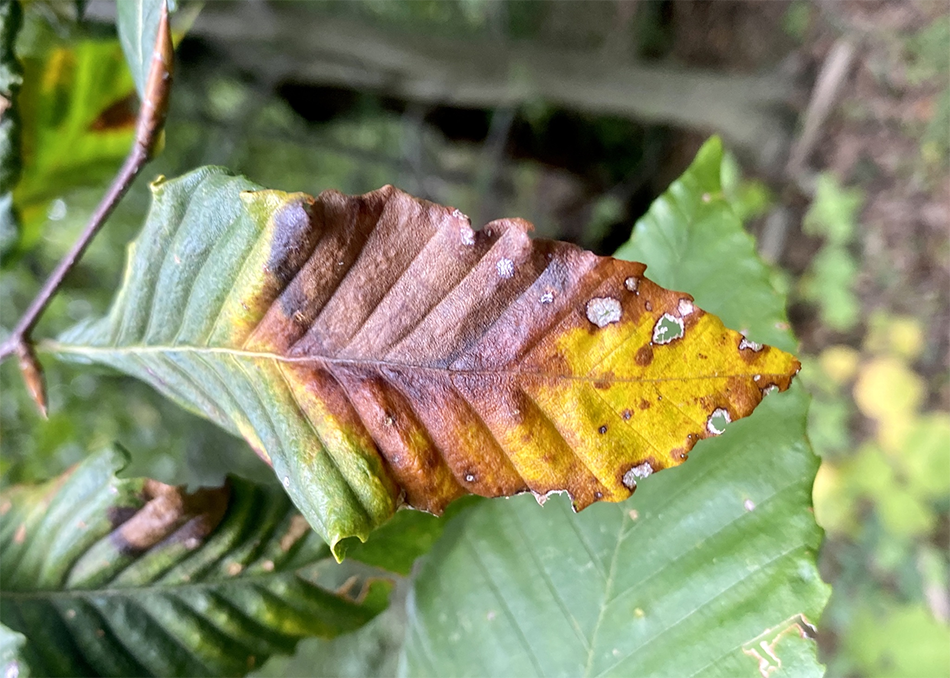Beech leaf disease (BLD), a relatively new affliction that’s deadly to beech trees, is making its way up and down the East Coast, threatening the survival of beech trees and encouraging an urgent effort by biotech to find a treatment.
The disease appears to be caused by an invasive species, an increasingly common threat to American trees in our ever-more-mobile world. As with other such threats, researchers are looking to biotech to save our trees, and findings, may suggest a path forward—including some published in late June 2023.
“There’s a growing list of native trees that have been virtually eradicated from the landscape by invasive pests—the American elm, the American chestnut. Most recently, ash groves are collapsing, under attack by a beetle called the emerald ash borer. So, is the American beech next?” asks DCist.
What is beech leaf disease?
Beech leaf disease was first discovered in 2012 by forest biologist John Pogacnik, who found trees in Ohio’s Lake County with leaves that were shriveled and had black stripes. By 2018, the disease had been identified in 24 counties in Eastern Ohio.
This summer, it’s spreading up and down the East Coast, appearing in 12 additional U.S. states and Canadian provinces and ravaging trees from Washington, D.C. and Pennsylvania to Massachusetts and Rhode Island.
While the disease has spread rapidly, it mostly attacks saplings, which means that we are not seeing the dramatic die-offs that other tree diseases have caused. According to DCist, “the pattern of decline is different […] This could mean a slower unraveling of beech ecosystems.” But over time, the effects could be just as devastating, if old trees die off, and there are no young trees to replace them.
What has science learned?
Scientists have determined the cause is a type of tiny worm called nematode, similar to one that is seen in Asia, where trees do not suffer the same fate. The American subspecies of this pest, Litylenchus crenatae ssp. mccannii has been found to be slightly different from the Asian one, and it is not clear exactly where this unique worm came from.
The way the disease infects trees is also not clear: The nematode is associated with the disease, and fungal and bacterial agents are present too, according to research. But there was some debate over whether these agents were carried by the nematode or simply facilitated its attack, Science reports.
A study posted on June 22 suggests that the nematode causes a unique cellular process that makes it easier for the nematode to feed on beech trees. “These results revealed a high specialized mode of parasitism,” the study says.
Could genetic approaches help beech and other trees?
Noticing that certain beeches are resistant to the disease, researchers at Holden Forests & Gardens report they have cloned those trees from the wild to determine whether they have a genetic resistance that can be used to propagate beech trees that will survive.
This approach is already being taken to save the American chestnut. Biotech has developed solutions for other tree-killing diseases like gene editing the American chestnut to make it immune to blight, which could help bring back the iconic American tree from near extinction.




